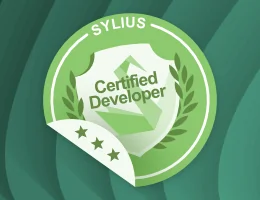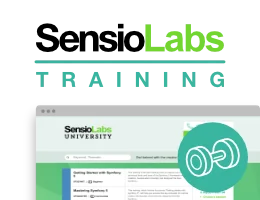Creating a Bug Reproducer
The main Symfony code repository receives thousands of issues reports per year. Some of those issues are easy to understand and can be fixed without any other information. However, other issues are much harder to understand because developers can't reproduce them in their computers. That's when we'll ask you to create a "bug reproducer", which is the minimum amount of code needed to make the bug appear when executed.
Reproducing Simple Bugs
If you are reporting a bug related to some Symfony component used outside the Symfony framework, it's enough to share a small PHP script that when executed shows the bug:
1 2 3 4 5 6 7 8 9 10 11 12 13
// First, run "composer require symfony/validator"
// Then, execute this file:
<?php
require_once __DIR__.'/vendor/autoload.php';
use Symfony\Component\Validator\Constraints;
$wrongUrl = 'http://example.com/exploit.html?<script>alert(1);</script>';
$urlValidator = new Constraints\UrlValidator();
$urlConstraint = new Constraints\Url();
// The URL is wrong, so var_dump() should display an error, but it displays
// "null" instead because there is no context to build a validator violation
var_dump($urlValidator->validate($wrongUrl, $urlConstraint));Reproducing Complex Bugs
If the bug is related to the Symfony Framework or if it's too complex to create a PHP script, it's better to reproduce the bug by creating a new project. To do so:
- Create a new project:
1
$ composer create-project symfony/skeleton bug_app- Add and commit the changes generated by Symfony.
- Now you must add the minimum amount of code to reproduce the bug. This is the trickiest part and it's explained a bit more later.
- Add and commit your changes.
- Create a new repository on GitHub (give it any name).
- Follow the instructions on GitHub to add the
originremote to your local project and push it. - Add a comment in your original issue report to share the URL of your forked
project (e.g.
https://github.com/YOUR-GITHUB-USERNAME/symfony_issue_23567) and, if necessary, explain the steps to reproduce (e.g. "browse this URL", "fill in this data in the form and submit it", etc.)
Adding the Minimum Amount of Code Possible
The key to create a bug reproducer is to solely focus on the feature that you suspect is failing. For example, imagine that you suspect that the bug is related to a route definition. Then, after creating your project:
- Don't edit any of the default Symfony configuration options.
- Don't copy your original application code and don't use the same structure of controllers, actions, etc. as in your original application.
- Create a small controller and add your routing definition that shows the bug.
- Don't create or modify any other file.
- Install the local web server provided by Symfony
and use the
symfony server:startcommand to browse to the new route and see if the bug appears or not. - If you can see the bug, you're done and you can already share the code with us.
- If you can't see the bug, you must keep making small changes. For example, if your original route was defined using XML, forget about the previous route and define the route using XML instead. Or maybe your application registers some event listeners and that's where the real bug is. In that case, add an event listener that's similar to your real app to see if you can find the bug.
In short, the idea is to keep adding small and incremental changes to a new project until you can reproduce the bug.

